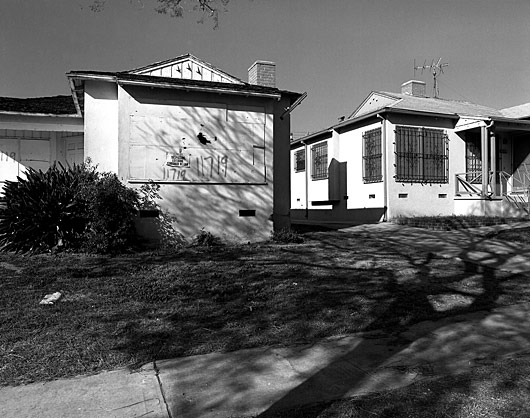L.A.’s New Budget: Who’s in the Driver’s Seat?
At the beginning of Mayor Eric Garcetti’s first of three presentations on the future of city budgeting last Thursday, Rick Cole, Deputy Mayor of Budgeting and Innovation, compared Los Angeles to a luxury vehicle—to make a point about the administration’s new approach to allocating funding. Taking a blowtorch to a Lexus in order to fix it only creates a torched Lexus, he said. But replacing it with a Camry shifts the task at hand from tending to a high-maintenance product to relying upon a more basic one that’s much easier to manage.
It was a strange metaphor for a number of reasons. For one thing, “fancy car” doesn’t really come to mind when thinking about city government. Also, most of the folks crammed into the Holman United Methodist Church that night probably wanted to talk about improvements to the public transportation system before digging into car analogies. But the theme of the night was performance, a word used in almost every car commercial—and the new gauge by which public services would be reviewed before receiving (or losing) precious city funding.
Performance budgeting is a relatively new term in the world of public governance. For the most part, performance budgeting means making budget decisions based on the effectiveness of a program rather than fiscal goals. For example, is an after-school program designed to keep young people out of the prison system actually meeting its goal rather than simply managing its budget well? That’s the theory behind the approach.
The meeting—which was titled “L.A.’s Budget: Focusing on What Matters Most”—had a two-fold agenda: City reps were expected to define the new process, and outline how this new process would affect the community’s ability to provide feedback on the city’s budget. Unfortunately, Cole didn’t really move beyond stock talking points to explain how performance budgeting would be applied here, and what it means for communities most in need. And this is particularly disappointing since the Mayor intends to propose a new budget on April 21. If community residents don’t have open lines of communication with his office now, how will they have a have in deciding what’s most important? And on what basis?
Low-income communities both need and deserve more investment than others so that they can perform well, and so that the city can prioritize the creation of equitable policies. Also, no revamping of allocation procedures will ever make a dent in erasing social injustice, putting the safety net back in place, and creating safe, healthy neighborhoods until the root causes of the problems and conditions in South LA are addressed.
The meeting ended with roundtable discussions during which attendees voiced their wishes for how future city funding should be distributed. Flashing lights at crosswalks, affordable housing, and job training programs were just a few suggestions. But city officials also pointed out the new budgeting plan will be rolled out slowly over the next few years: “It’s a marathon, not a sprint,” was another refrain Cole repeated many times. Additionally, with imminent plans to cut a much-needed “Gross Receipts” business tax—a cut that would eliminate $400 million and seems poised to pass in the near future—the time to start investing in our communities is right now, before our residents are left on the side of the road.













